Facts & Stories
The Brown Brogue – A True Classic for Town and Country
In the late 1930's, the leather industry had made such a remarkable progress in processing the material, namely with the perfection of antiquing, that general acceptance of (only dark, at first) brown leather shoes with dark suits seemed inevitable. Black shoes were (and are still) more formal, yes, but they could also be seen a little bit boring. As people were drawn to the richness in colouration, the play of light, the patina offered by high-quality brown leather shoes, black footwear became all but out-competed, except in the most formal cases.
And today, there we are. (In Italy, for example, hardly anyone wears black shoes without black or white tie, and tan shoes with sombre coloured suits are common.)
Brogues, the classic fall and spring seasons brown leather shoe, takes its name from the Scottish word bróg, simply meaning “shoe”. Its defining quality, the patterned punched holes in its outer layer of leather, did not originate as mere decoration, far from it: It was the solution to working in the wet conditions of the Scottish Highlands without ruining your footwear or feet. The holes are punched only trough the outer layer on the double layered parts of the shoe. This allows for a quick drying without compromising the weather resistance of the uppers.
These traditional shoes of Scottish farmers first made their way into fashion when the patterns, quite removed from their practical use, appeared on ladies' shoes as decoration. Soon the patterns were all over men's shoes too, and different hybrid forms developed into what we have today (including the somewhat confusing black Oxford brogue).
As with other laced shoes, there are two classes of brogues: The enclosed lacing shoes, often called Oxfords, and the open lacing, often called Derbys (or, especially in the US, Bluchers.) Enclosed lacing is considered a little bit less informal, more "city-like", as it were -- although one must keep in mind that a brogue always displays a relaxed, informal air, so that the choice between the two is a matter of personal taste and not of decor.
Brogues are also classified by the area of the shoe included in the hole pattern. A wing tipped shoe with the toe and all the seams punched out is called a Full Brogue. Losing the wing tips of the toe cap makes it a Half Brogue. Then remove the medallion pattern from the toe cap and you will have a Quarter Brogue. So when does brogues quit being brogues? Well, most of the outer seams must have been patterned for them to be considered as brogues. Otherwise the shoes lose the quick drying property that is the essence of brogues rural history.
So when you put on your favourite brown brogues, whether in the country or in the town, save a thought for the leather industry and the Scottish peasants. After all, only wearing plain black shoes would be utterly boring.










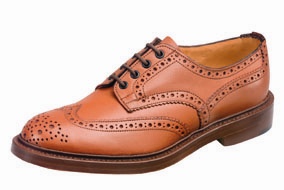
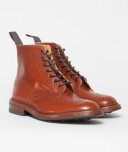
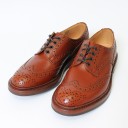

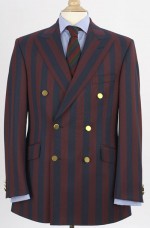

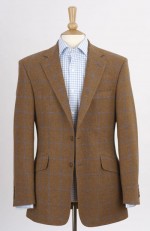
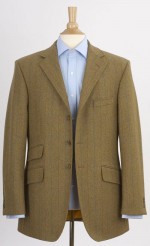


Comments
Nice reading
This was a nice article. Now I must convince my boyfriend to get some brown shoes. But Tricker seems a bit expencive.
Post new comment